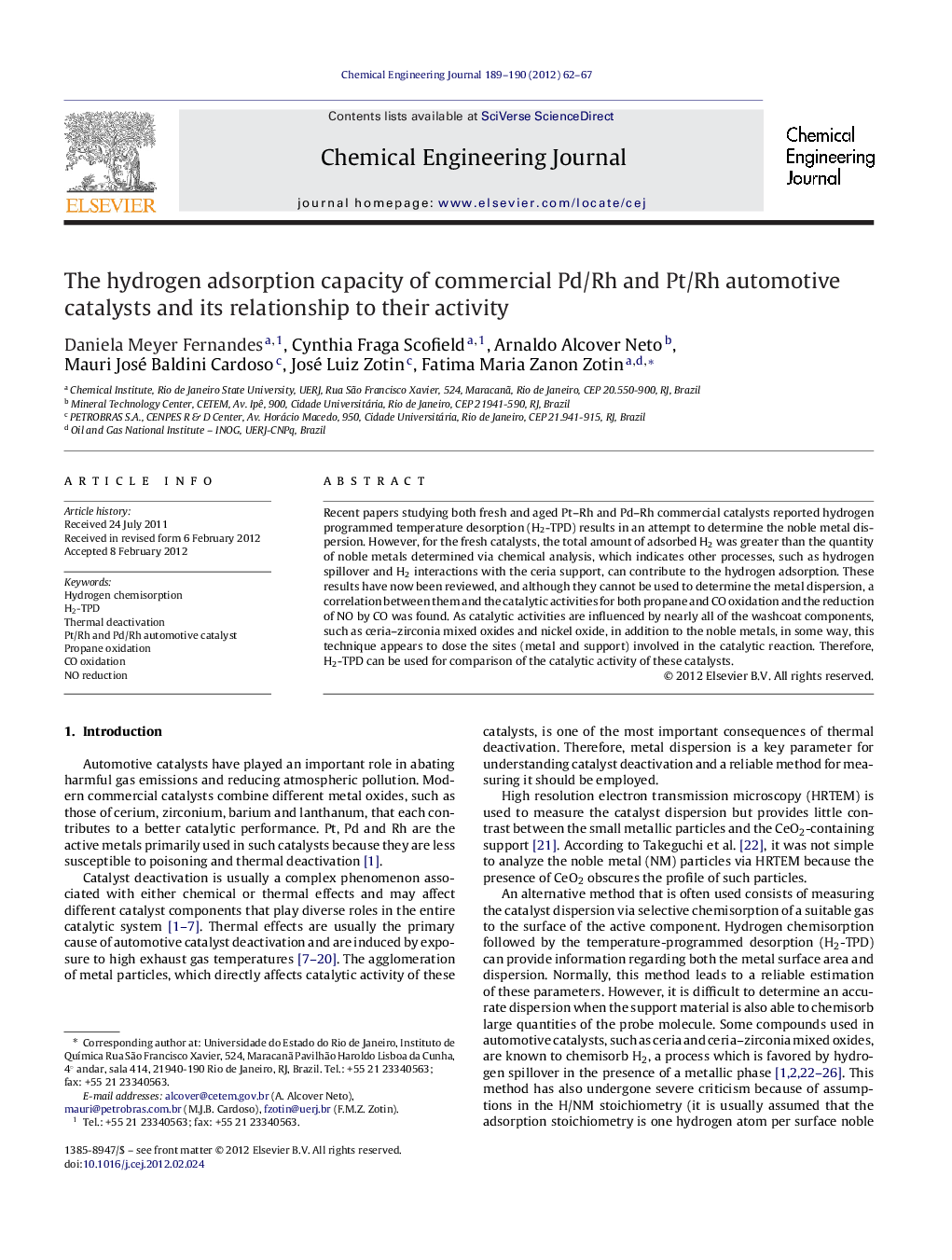| Article ID | Journal | Published Year | Pages | File Type |
|---|---|---|---|---|
| 149956 | Chemical Engineering Journal | 2012 | 6 Pages |
Recent papers studying both fresh and aged Pt–Rh and Pd–Rh commercial catalysts reported hydrogen programmed temperature desorption (H2-TPD) results in an attempt to determine the noble metal dispersion. However, for the fresh catalysts, the total amount of adsorbed H2 was greater than the quantity of noble metals determined via chemical analysis, which indicates other processes, such as hydrogen spillover and H2 interactions with the ceria support, can contribute to the hydrogen adsorption. These results have now been reviewed, and although they cannot be used to determine the metal dispersion, a correlation between them and the catalytic activities for both propane and CO oxidation and the reduction of NO by CO was found. As catalytic activities are influenced by nearly all of the washcoat components, such as ceria–zirconia mixed oxides and nickel oxide, in addition to the noble metals, in some way, this technique appears to dose the sites (metal and support) involved in the catalytic reaction. Therefore, H2-TPD can be used for comparison of the catalytic activity of these catalysts.
► Fresh and aged Pt–Rh and Pd–Rh commercial automotive catalysts. ► H2-TPD accounts for hydrogen chemisorbed on noble metal and washcoat components. ► Consistent trends between desorbed hydrogen by H2-TPD and catalytic activity. ► Correlation observed for CO and propane oxidations and NO reduction by CO.
